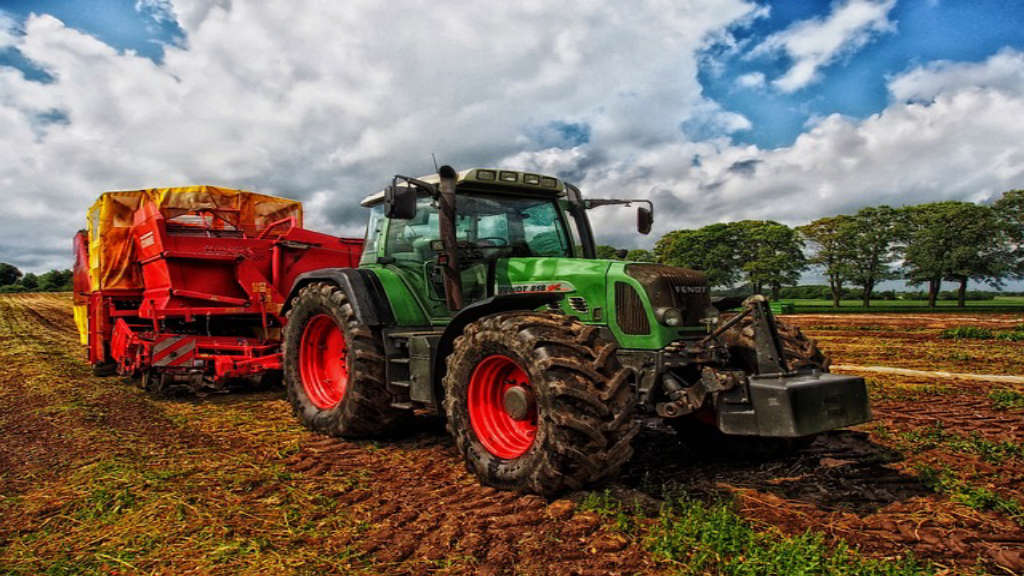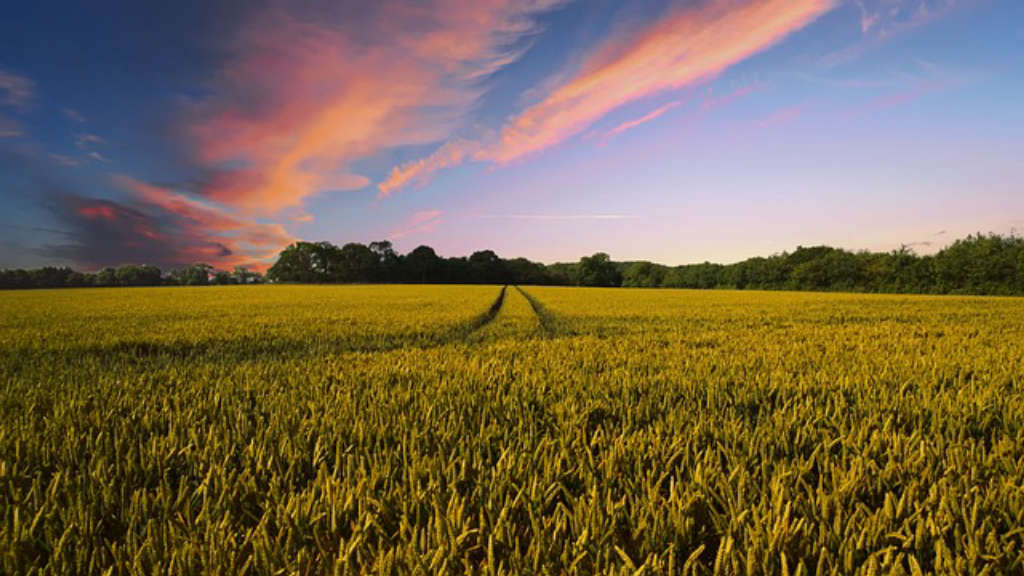In the face of climate change and increasing food demand, the agricultural sector is undergoing a profound transformation. By leveraging precision farming technology, farmers can optimize their yield while minimizing environmental impact. This innovative approach not only enhances productivity but also promotes sustainable practices. The integration of advanced data analytics, sensors, and GPS technologies allows for a more informed decision-making process on the farm. Embracing these modern tools opens the door to a future where agriculture meets the demands of a growing population without compromising the health of our planet.
Main Points
- Precision farming technology harnesses data for optimal resource allocation.
- Advanced sensors enable real-time monitoring of crop health.
- GPS innovation guides machine operations for increased efficiency.
- Sustainable practices emerge from tailored farming techniques.

Innovative Tools and Techniques in Precision Agriculture: Driving Efficiency and Reducing Waste
The necessity for sustainable practices in agriculture has never been more pressing. As global populations rise and arable land decreases, innovative tools and techniques in precision agriculture emerge as beacons of hope. These advancements not only drive efficiency within farming operations but also significantly aid in reducing waste—a dual goal that resonates well with today’s environmentally conscious society.
Understanding Precision Agriculture
At its core, precision agriculture seeks to optimize field-level management regarding crop farming. This approach utilizes advanced technologies to ensure that resources are used in the most efficient way possible. However, the sheer variety of tools and techniques can be overwhelming. Here are some noteworthy innovations:
- GPS Technology: Enables farmers to map their fields accurately. This technology allows for precise positioning, which helps in soil sampling and crop monitoring.
- Remote Sensing: Satellite imagery provides valuable data on crop health and soil conditions. Farmers can assess the needs of their crops without stepping into the field.
- Drones: Equipped with cameras and sensors, drones give a bird’s-eye view of the fields. This aerial perspective allows for real-time monitoring and prompt decision-making.
- Data Analytics: By collecting and analyzing data from various sources, farmers can predict trends and enhance productivity. Data analytics transforms numbers into meaningful insights.
These tools facilitate a data-driven approach, where decisions are not based on assumptions but grounded in precise data analysis. However, it’s essential to understand that implementing these technologies may require an initial investment and a shift in traditional practices. This is where farmers often face their first hurdle.
Challenges and Considerations
Even though the rewards of precision agriculture are substantial, adopting these efficient techniques does not come without challenges. Firstly, there is often a steep learning curve. Many farmers might find themselves grappling with technology they are unfamiliar with. Additionally, integrating these tools into existing workflows can be a daunting task. It’s crucial to see these challenges as part of the journey towards sustainability.
Moreover, the issue of data privacy cannot be overlooked. Farmers must weigh the advantages of sharing data against potential privacy concerns. The value of data lies in its usability; thus, trusting the systems that handle it is imperative. Hence, transparency in how data is collected and utilized should be prioritized.
Conclusion
In summary, the role of innovative tools and techniques in precision agriculture is pivotal in driving efficiency and reducing waste. While challenges exist, the potential benefits far outweigh the obstacles. By embracing these advances, farmers can contribute to a more sustainable future. As we move forward, the integration of these technologies will be crucial in meeting the demands of the ever-growing global population. Therefore, investing in knowledge and technology is not just a wise choice, but a necessity.
Ultimately, the path towards effective precision agriculture is paved with the unwavering commitment to harness waste reduction and efficiency enhancement. Adopting the right tools will usher in a new era of farming that values sustainability and productivity in equal measure.

The Role of Data Analytics in Precision Farming: Enhancing Crop Yields and Sustainable Practices
In recent years, the agricultural landscape has witnessed transformative changes driven by advancements in technology. Among these innovations, data analytics has emerged as a crucial tool in enhancing not only crop yields but also fostering sustainable practices in farming. Farmers today face a myriad of challenges, including climate variability, soil degradation, and increasing demand for food. By leveraging data analytics, they can make informed decisions to tackle these issues effectively.
Understanding Precision Farming
At its core, precision farming refers to the practice of using technology to monitor and manage agricultural production. This method goes beyond traditional farming; it’s about understanding the unique conditions of each field and optimizing them for better outcomes. Farmers can utilize various data sources, like satellite imagery and IoT devices, to collect valuable information about soil health, moisture levels, and pest populations. This wealth of information allows them to tailor their strategies to specific crop needs.
The Impact of Data Analytics
Data analytics plays a pivotal role in this transformation. Through analysis of the data gathered, farmers can identify patterns that were previously invisible. For instance, by examining historical yield data alongside weather patterns, farmers can predict potential yield fluctuations. This predictive capability is essential for planning—knowing when to plant, when to irrigate, and how to apply fertilizers most effectively.
Furthermore, data analytics aids in resource management. Imagine a farm where water usage is perfectly aligned with crop needs. Implementing analytics can lead to significant reductions in water consumption. By analyzing soil moisture data, farmers can apply irrigation only when necessary, thereby conserving water and reducing costs.
Sustainability through Data-Driven Decisions
Sustainable practices are at the forefront of modern agriculture. With increasing awareness of environmental issues, farmers are under pressure to adopt practices that minimize their ecological footprint. Data analytics supports this goal by enabling precision in resource application. For instance, by analyzing nutrient requirements of crops, farmers can avoid over-fertilization, which not only enhances crop yield but also reduces runoff that can harm nearby water bodies.
Challenges and Considerations
However, data analytics in agriculture is not without its challenges. Farmers must navigate the complexities of data management and technology adoption. The initial investment in precision farming technologies may seem daunting, and there can be a steep learning curve involved. Yet, as the old adage goes, “You have to spend money to make money.” The potential for increased yield and reduced waste often outweighs the initial challenges.
Moreover, there is a risk of over-reliance on data. It’s crucial for farmers to balance technology with traditional knowledge. While data analytics can provide insights, it should not supplant the intuition and experience that farmers have developed over years of practice. A hybrid approach that combines data-driven decisions with on-the-ground observations will often yield the best results.
Conclusion
In conclusion, the role of data analytics in precision farming is undeniably significant. It enhances crop yields while promoting sustainable practices crucial for the future of agriculture. As technology continues to evolve, the potential for even greater advancements in farming practices remains vast. By embracing data analytics, farmers can not only secure their livelihoods but also contribute to a healthier planet. The journey may be complex, but the benefits are clear—better yields, efficient resource management, and a sustainable future.

Conclusion
In conclusion, embracing precision farming technology can transform the agricultural landscape. This approach not only enhances efficiency but also promotes sustainability. Many farmers discover that utilizing data-driven insights leads to better resource management and higher yields. Moreover, precision farming encourages a deeper connection with the land, allowing growers to understand their crops and soil like never before. As the industry continues to evolve, I believe the adoption of these innovative practices will become essential for addressing global food demands. Ultimately, the future of farming rests on our ability to harness technology while respecting the environment.
Frequently Asked Questions
What is precision farming technology?
Precision farming technology refers to the use of advanced tools and techniques, such as GPS, sensors, and data analytics, to monitor and manage field variability in crops to optimize yield and improve overall farm efficiency.
How can precision farming benefit farmers?
Precision farming can benefit farmers by increasing crop yields, reducing waste, lowering costs, and improving resource management. It allows for targeted application of nutrients, water, and pesticides, leading to more sustainable farming practices.
Is precision farming technology expensive to implement?
While the initial investment in precision farming technology can be high, many farmers find that the long-term benefits, such as reduced inputs and increased productivity, outweigh the costs. Additionally, there are often financial assistance programs and grants available to help with implementation.